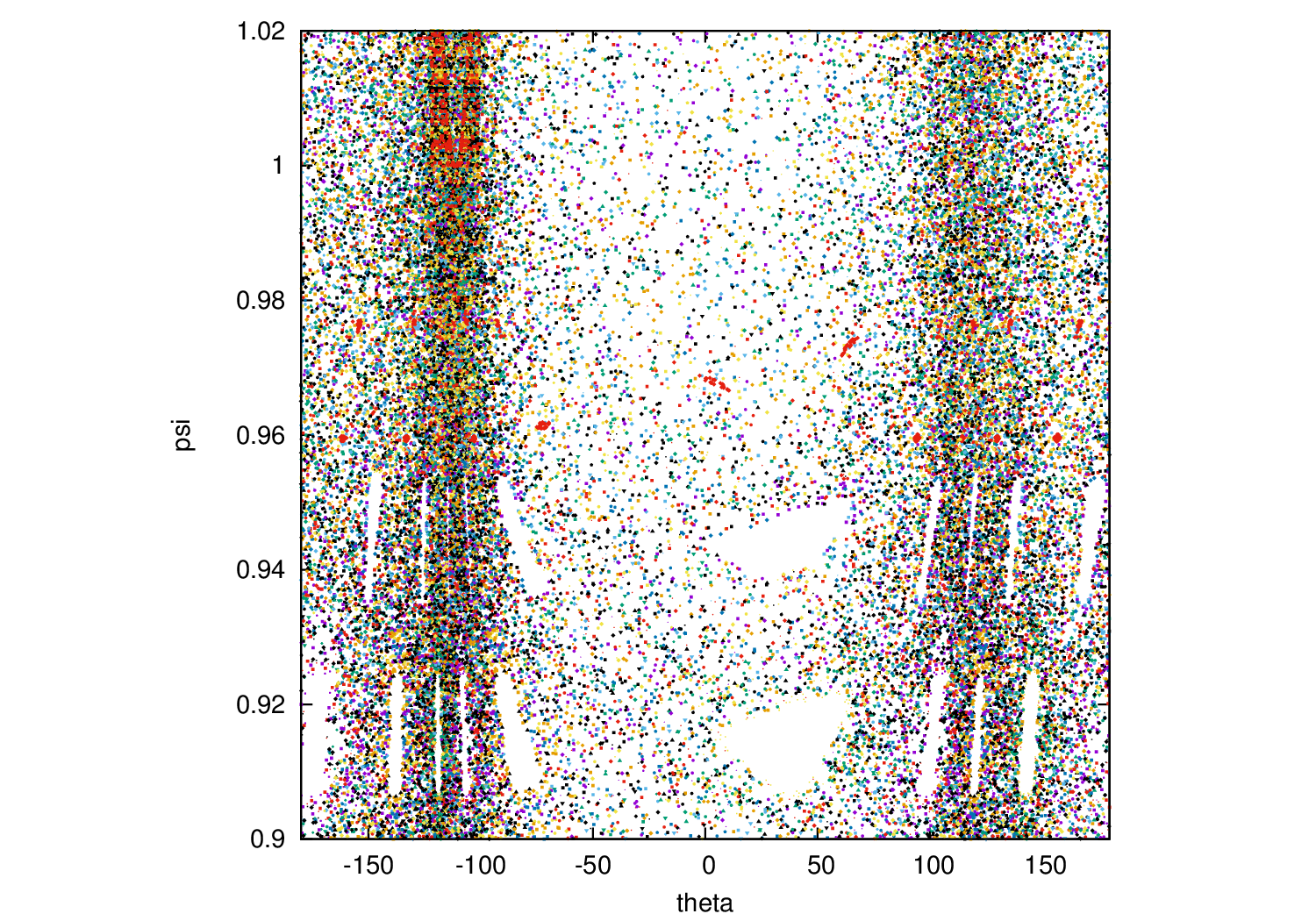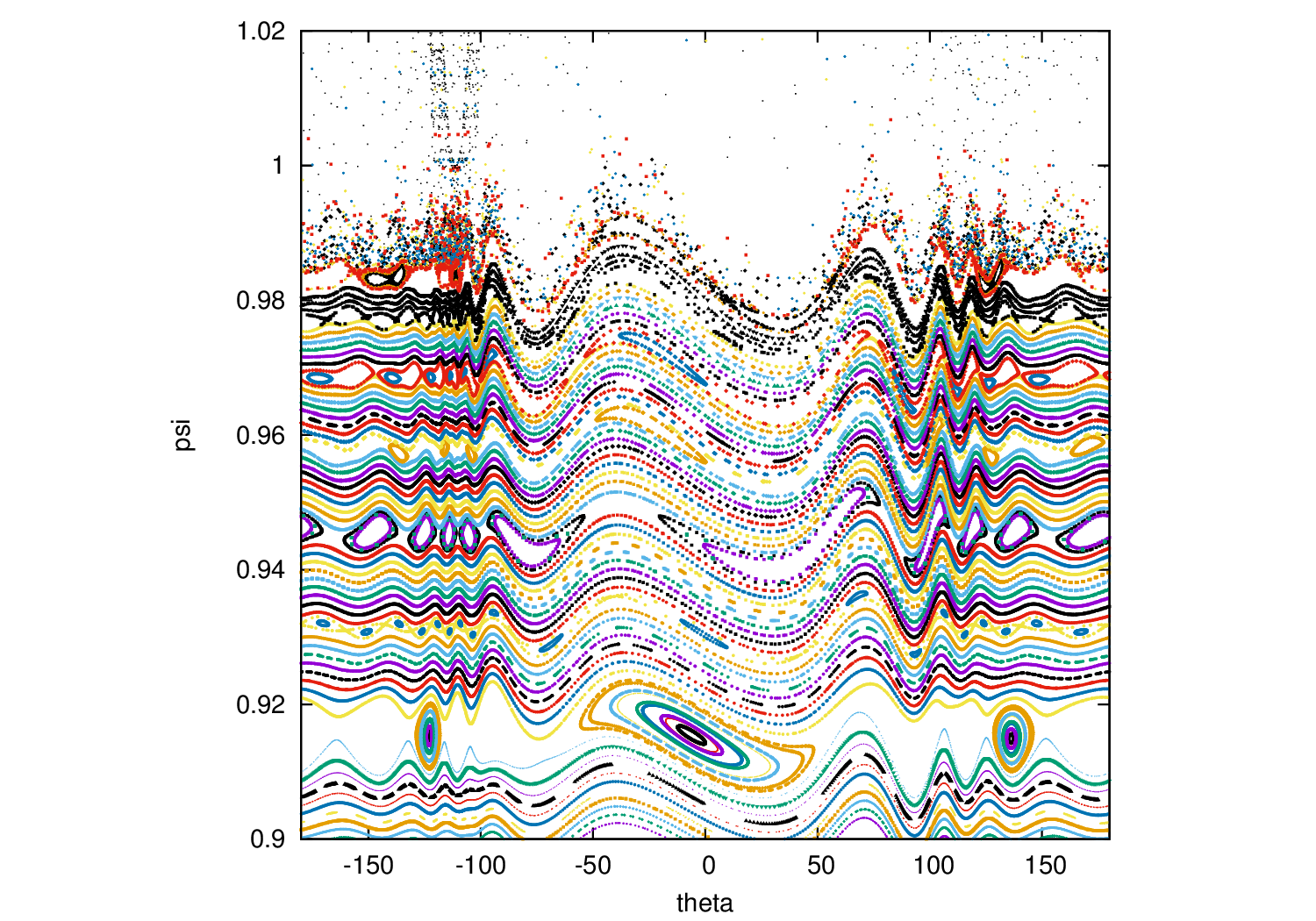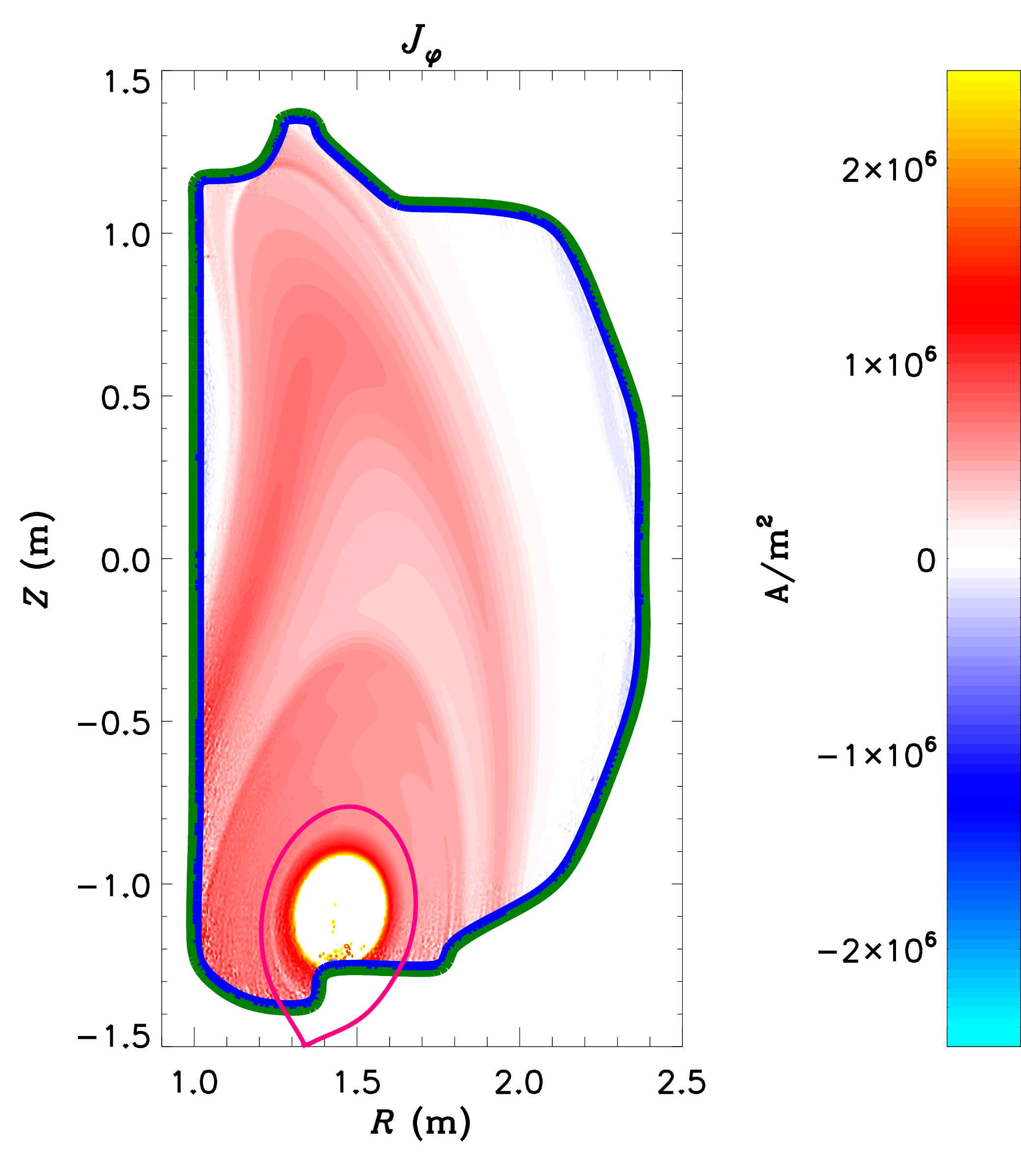Non-Axisymmetric Equilibria
|
The application of non-axisymmetric magnetic fields to
tokamak plasmas is observed to influence the confinement and
stability properties of these plasmas considerably. In
particular, the application of non-axisymmetric fields has been
found to lead to enhanced particle transport, torque, and the
mitigation or complete suppression of edge localized modes
(ELMs).
A primary difficulty of understanding these effects is that
the magnetic field present in the plasma may be very different
from the field that is applied. Currents arising in the plasma
in response to the applied field may themselves generate a
magnetic field having a very different spectrum from the applied
field. Therefore understanding the magnetic field present in
the plasma requires a self-consistent description of this
plasma response.
This self-consistent response using MHD codes such as
M3D-C1. These calculations have been found to provide a good
description of both the perturbed magnetic fields measured
outside the plasma, and of the perturbed equilibrium profiles
measured in the plasma edge. Ultimately, we seek to use this
understanding of the complex perturbed equilibrium geometry as
a basis for understanding how applied non-axisymmetric magnetic
fields modify particle, thermal, and momentum transport.
|
|


A Poincaré section of the calculated magnetic
field in the edge of a DIII-D plasma, in which a
non-axisymmetric field has been applied using the DIII-D
I-coils. Top: The field calculated by neglecting
the plasma response currents. Bottom: The field
calculated by self-consistently including the plasma
response currents.
|
Macroscopic Stability of Tokamaks
|
Tokamaks are subject to various macroscopic instabilities. Some
of these instabilities may lead to a complete loss of plasma
confinement, called a "disruption." These must be avoided in
any successful tokamak reactor.
MHD codes such as M3D-C1 may be used to study both the onset of
disruptive instabilities, and the dynamics of the ensuing
disruption. Instability onset can be calculated using linear
perturbation theory, and allow the determination of pressure
and current thresholds. The subsequent disruption dynamics
involve large deviations from equilibrium, and require a
nonlinear modeling approach.
An example of a disruptive instability is a vertical
displacement event (VDE), which results when control of the
vertical positioning of the plasma is lost. Such an event
results in significant induced electromagnetic forces on the
conducting structures of the tokamak, as well as large thermal
fluxes to the plasma-facing components of the tokamak.
|
|

The toroidal current density in an M3D-C1
simulation of a VDE. The plasma has drifted vertically to
the point where it rests on the lower divertor. Currents
persist in the open field-line region (Halo currents).
|
Computational Modeling
M3D-C1
is an extended-MHD code that is used for calculating
plasma equilibrium and stability using an extended-MHD
model.
Fusion-IO
(FIO) is a set of libraries providing a common interface to data
generated by various fusion codes.
|



